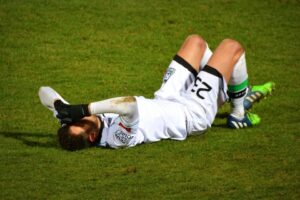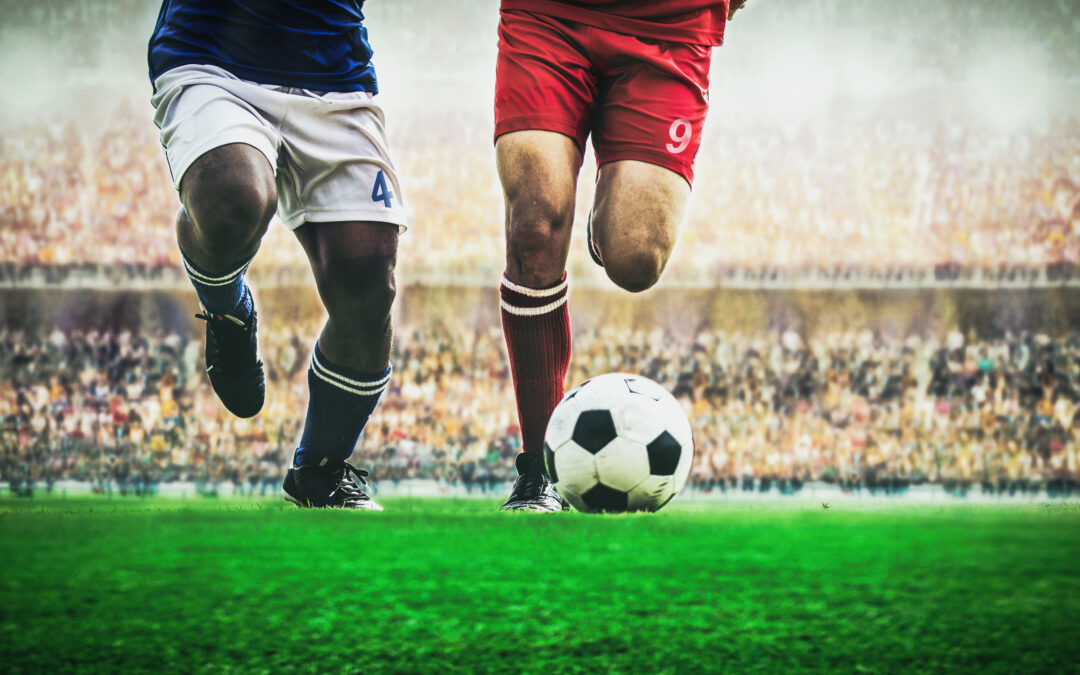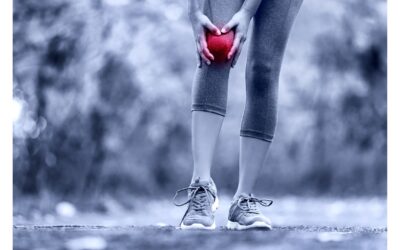Sports rehabilitator placement to pitchside
Sports Rehabilitation can be defined as understanding, preventing, and treating sports and exercise-related injuries and musculoskeletal conditions (UWE, 2021). Working as a Sports Rehabilitator at Corinthian FC, (Isthmian League Division 1 South East), it is my job to ensure my players are prepared for these demands, through various methods and practices to help prevent injury.
Tip 1: Preparing athletes
Sport poses numerous challenges to athletes relative to the demands of their game and football is no exception. Starting with the basics, football is a physically demanding, endurance-focused game whereby players are exposed to high impact, multi-directional forces in a contest combined with agility and ball control. Whilst there is an ever-present injury risk with any physical activity, the anticipation and analysis of these risks can help us to deduce what we can do to prepare athletes adequately in terms of physical strength, joint mobility, and coordination.
In the same way that training sessions are made game-specific for tactical advancement, it also allows players to emulate similar physical mechanisms that would be seen on match days. Whether it be interval style conditioning to mimic the start-stop nature of a football match, or footwork drills utilising ladders and cones to work on both directional and speed changes, these practices allow athletes’ bodies to prepare for all the same demands that would be seen during the game, to the same intensity and beyond to sustain physical exertion for the necessary duration. This same principle is similarly practiced in the warm-up, alongside cardiovascular preparation to improve readiness to play.
Tip 2: Failing to prepare is preparing to fail
Preparation for Saturday’s matchday begins on Thursday at training by making sure my bags are fully stocked with supplies. When pitchside, I have two medical bags with me: one being full of tapes, sprays, first aid bandages, plasters, and similar, as well as a smaller carry-on bag. The contents of this bag are essentially what I may need most spontaneously in player treatment and therefore assessing the risk beforehand.

picture from the Corinthians website.
For example: How would I be equipped for a blood injury? Overshirt, nitrile gloves, bandages/dressings, and sterile wipes.
Do I know my relevant Maddox Questions* to ask a player with a suspected head injury to check for concussive symptoms? And perhaps most importantly in the current climate, do I have spare PPE and something I can use as a face covering in the face of needing to perform CPR? By listing and evaluating all the potential injuries and risks I may see during the game, I put myself in the best position to safely deal with any injury that may occur.
Tip 3: Preparing for match day
One of the most important things I consider when preparing for match day is the location of important equipment and information. When playing at home, I know the correct postcode to give to the ambulance service, that Darent Valley is the nearest Accident and Emergency Department and that the defibrillator is located upstairs in the clubroom. However, it is so important to familiarise these locations as a priority when playing away, and it is my responsibility to make myself aware of these upon arrival.
Tip 4: Diagnosing injuries during the game
Once the pl ayer’s safety has been confirmed after my assessment, the next step is to consider the mechanism of injury – the main factor in giving me my potential diagnosis
ayer’s safety has been confirmed after my assessment, the next step is to consider the mechanism of injury – the main factor in giving me my potential diagnosis
Did they collide, was it an impact injury?
Did they jump and land awkwardly, if so, how did they land?

*picture from Corintians insta
By understanding the biomechanics of the player’s movement, it provides insight into which structures may be affected. For example, a rupture of the Anterior Cruciate Ligament (ACL) is sustained via a twisting motion of the knee when the foot is fixed. When applying this to football, this is commonly seen when studs are stuck in the ground and the player is tackled, very sudden changes of direction or landing badly from a jump – perhaps a header. Watching the mechanism of injury (MOI) first-hand combined with the player’s injury symptoms makes the diagnostic process much more accurate.
* a set of 5 questions aimed to test the athlete’s awareness and orientation of the time, place, and surroundings when suspecting a concussion.
Tip 5: Planning recovery
 Finally, it is hugely important for me to consider the cardiovascular impact the game has on each athlete, and how best to plan recovery to optimise performance going forward. This consists of a rest day after the game, prioritising diet e.g., ensuring players are taking on enough protein to recover muscles and carbohydrates to replenish glycogen stores that were utilised in the game. Following the game, the next training session is likely to contain a stretch and mobility-focused element to continue muscle recovery, and then to ensure they are in the best position to continue training ready for next week’s game!
Finally, it is hugely important for me to consider the cardiovascular impact the game has on each athlete, and how best to plan recovery to optimise performance going forward. This consists of a rest day after the game, prioritising diet e.g., ensuring players are taking on enough protein to recover muscles and carbohydrates to replenish glycogen stores that were utilised in the game. Following the game, the next training session is likely to contain a stretch and mobility-focused element to continue muscle recovery, and then to ensure they are in the best position to continue training ready for next week’s game!
Tip 6: Postgame recovery
Lots of the boys at the club have taken Whole Body Cryotherapy in order to aid their recovery post-game. In a study by Hohenauer & Taeymans in 2015, they found that Cryotherapy showed significant effects in reducing the symptoms of DOMS (delayed onset of muscle soreness) for up to 96 hrs compared to passive control interventions, such as stretching. Physiologically, it works by redirecting blood flow to injured sites and thus accelerating tissue repair, which reduces muscle tension and soreness making it perfect incorporation into an athlete’s recovery routine (How is Cryotherapy Important in Professional Football).
Roundup
Sadly, at the moment, we are not sure where the ‘pandemic’ situation takes us, particularly with all the talks of the new variant (Omicron) and its contagious nature. However, if worse comes to worst, I will continue to rehabilitate my injured players, yet using the means of video calling to do my assessments and to supervise their home exercise programs. Making adaptations like this means that players can still continue to make progress even without face-to-face appointments, as well as keeping their general fitness up by the means of running, cycling, and other non-gym-based workouts.





